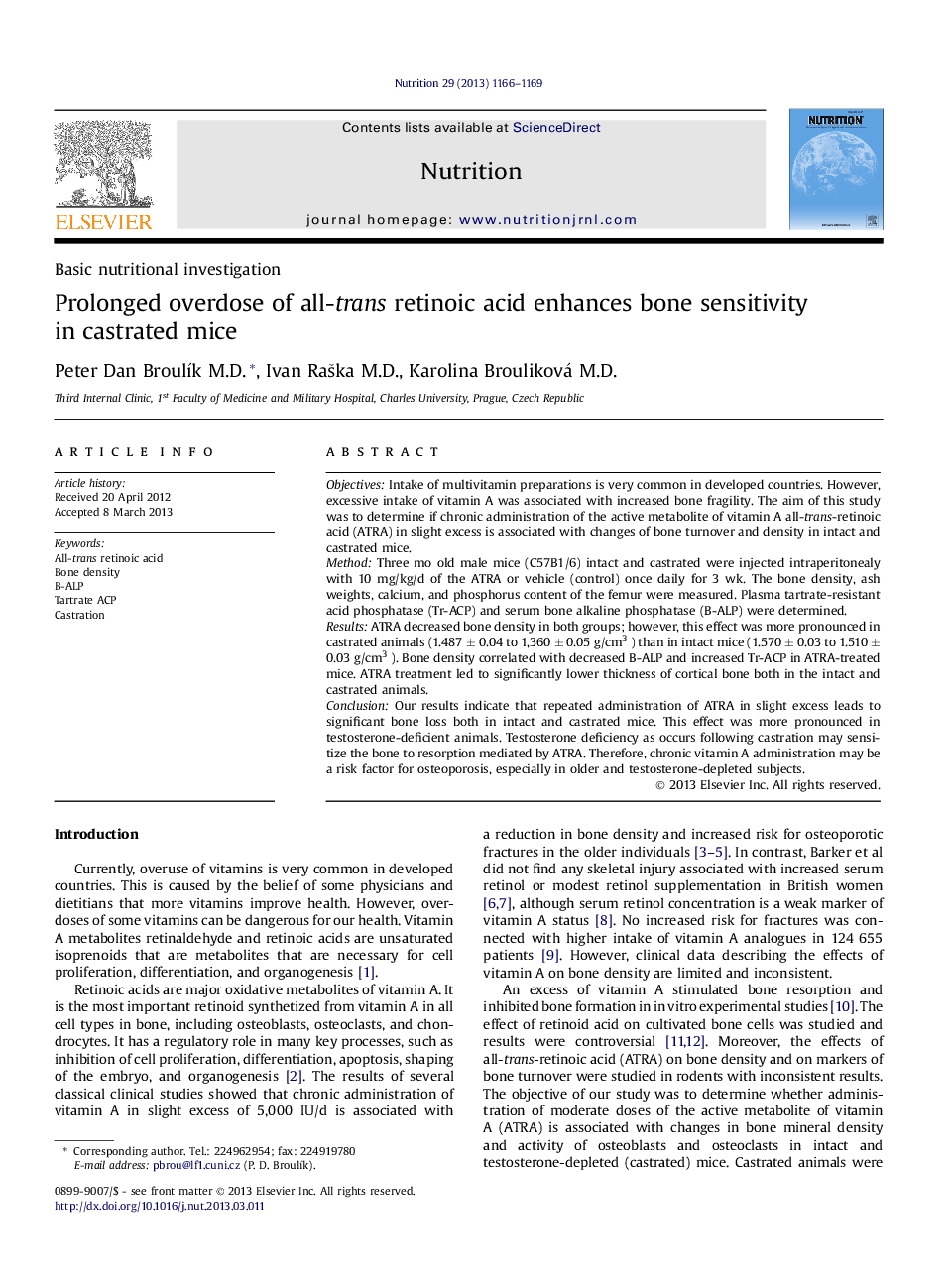| کد مقاله | کد نشریه | سال انتشار | مقاله انگلیسی | نسخه تمام متن |
|---|---|---|---|---|
| 6089960 | 1208562 | 2013 | 4 صفحه PDF | دانلود رایگان |

ObjectivesIntake of multivitamin preparations is very common in developed countries. However, excessive intake of vitamin A was associated with increased bone fragility. The aim of this study was to determine if chronic administration of the active metabolite of vitamin A all-trans-retinoic acid (ATRA) in slight excess is associated with changes of bone turnover and density in intact and castrated mice.MethodThree mo old male mice (C57B1/6) intact and castrated were injected intraperitonealy with 10 mg/kg/d of the ATRA or vehicle (control) once daily for 3 wk. The bone density, ash weights, calcium, and phosphorus content of the femur were measured. Plasma tartrate-resistant acid phosphatase (Tr-ACP) and serum bone alkaline phosphatase (B-ALP) were determined.ResultsATRA decreased bone density in both groups; however, this effect was more pronounced in castrated animals (1.487 ± 0.04 to 1,360 ± 0.05 g/cm3 ) than in intact mice (1.570 ± 0.03 to 1.510 ± 0.03 g/cm3 ). Bone density correlated with decreased B-ALP and increased Tr-ACP in ATRA-treated mice. ATRA treatment led to significantly lower thickness of cortical bone both in the intact and castrated animals.ConclusionOur results indicate that repeated administration of ATRA in slight excess leads to significant bone loss both in intact and castrated mice. This effect was more pronounced in testosterone-deficient animals. Testosterone deficiency as occurs following castration may sensitize the bone to resorption mediated by ATRA. Therefore, chronic vitamin A administration may be a risk factor for osteoporosis, especially in older and testosterone-depleted subjects.
Journal: Nutrition - Volume 29, Issue 9, September 2013, Pages 1166-1169